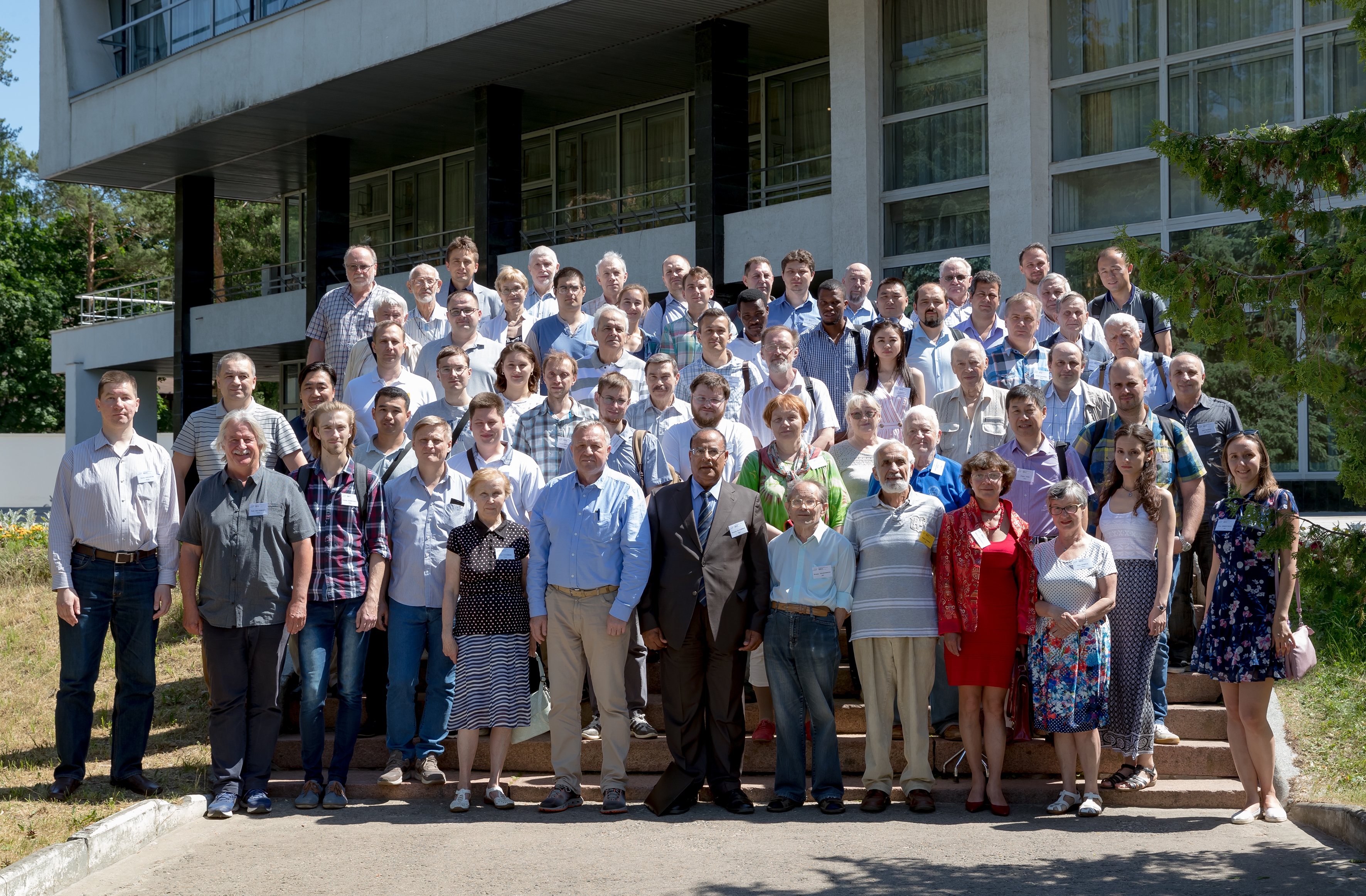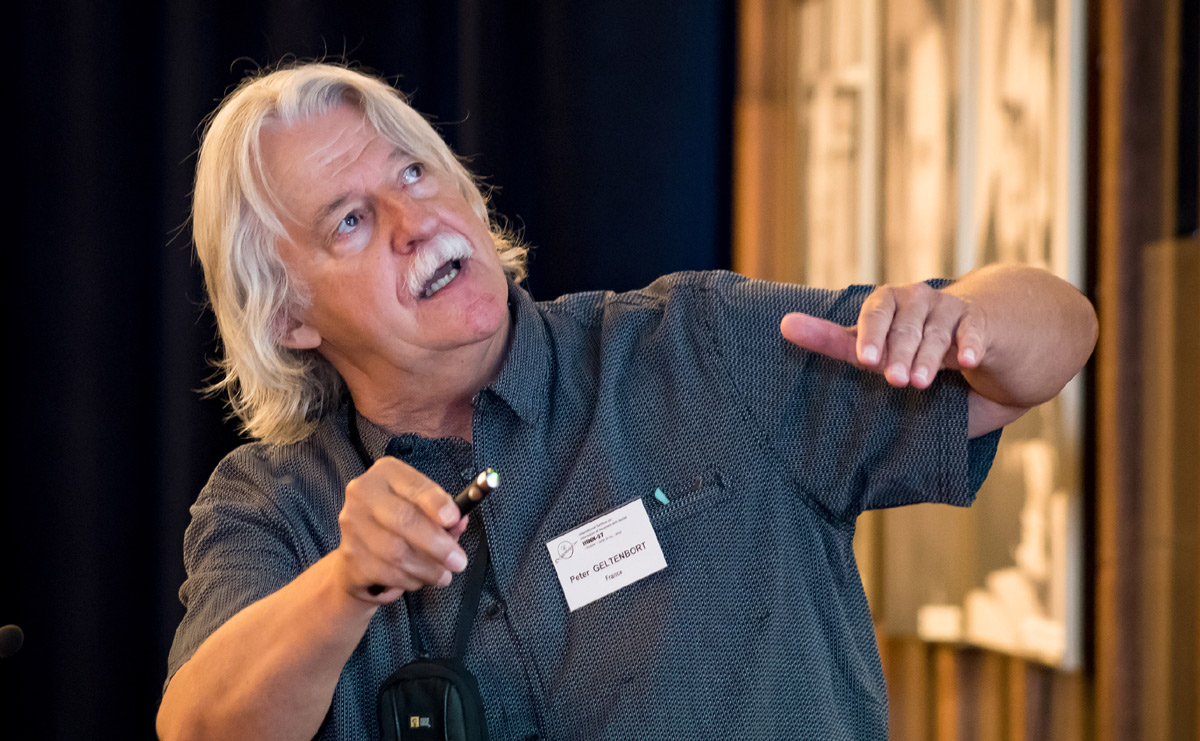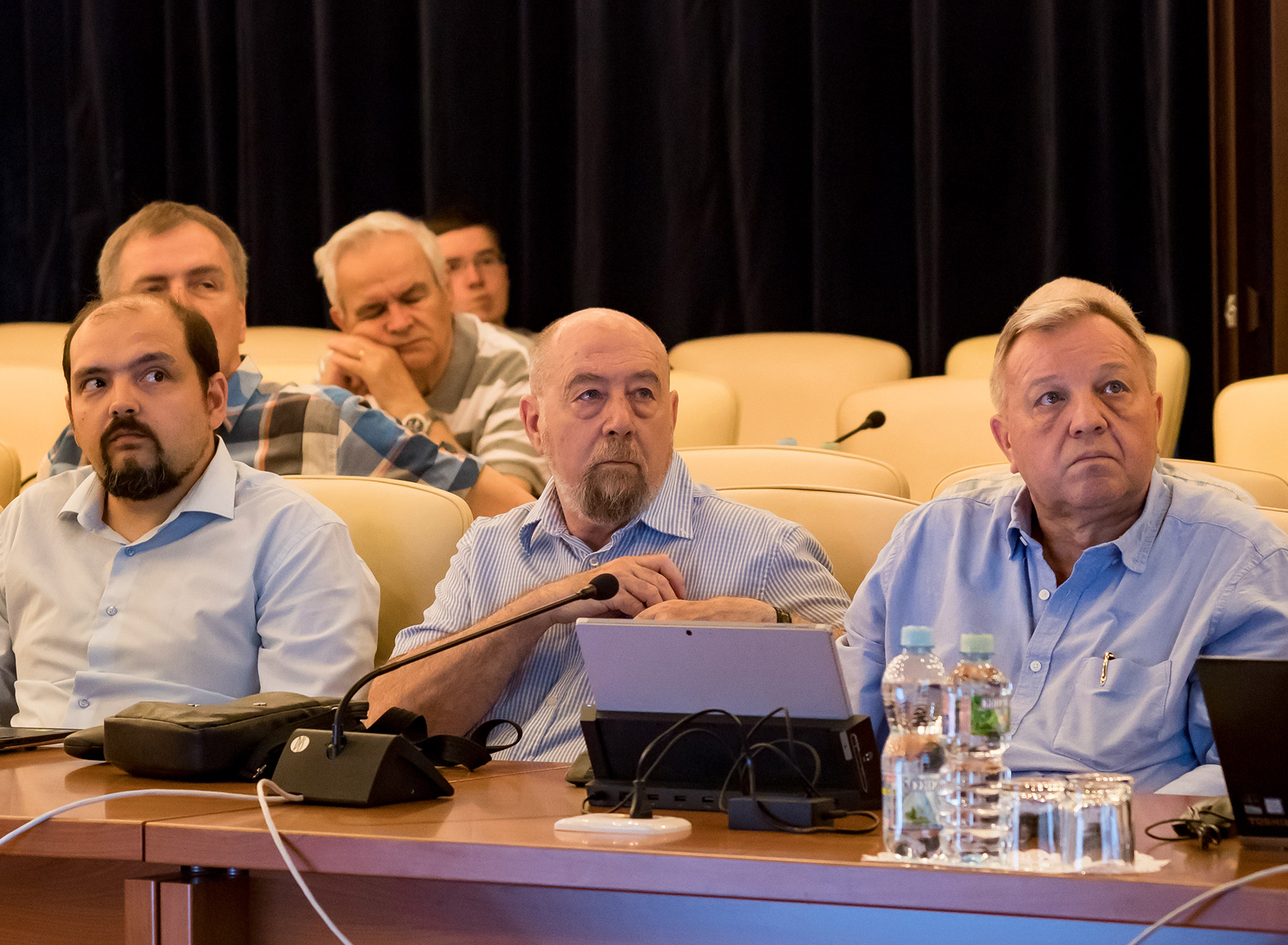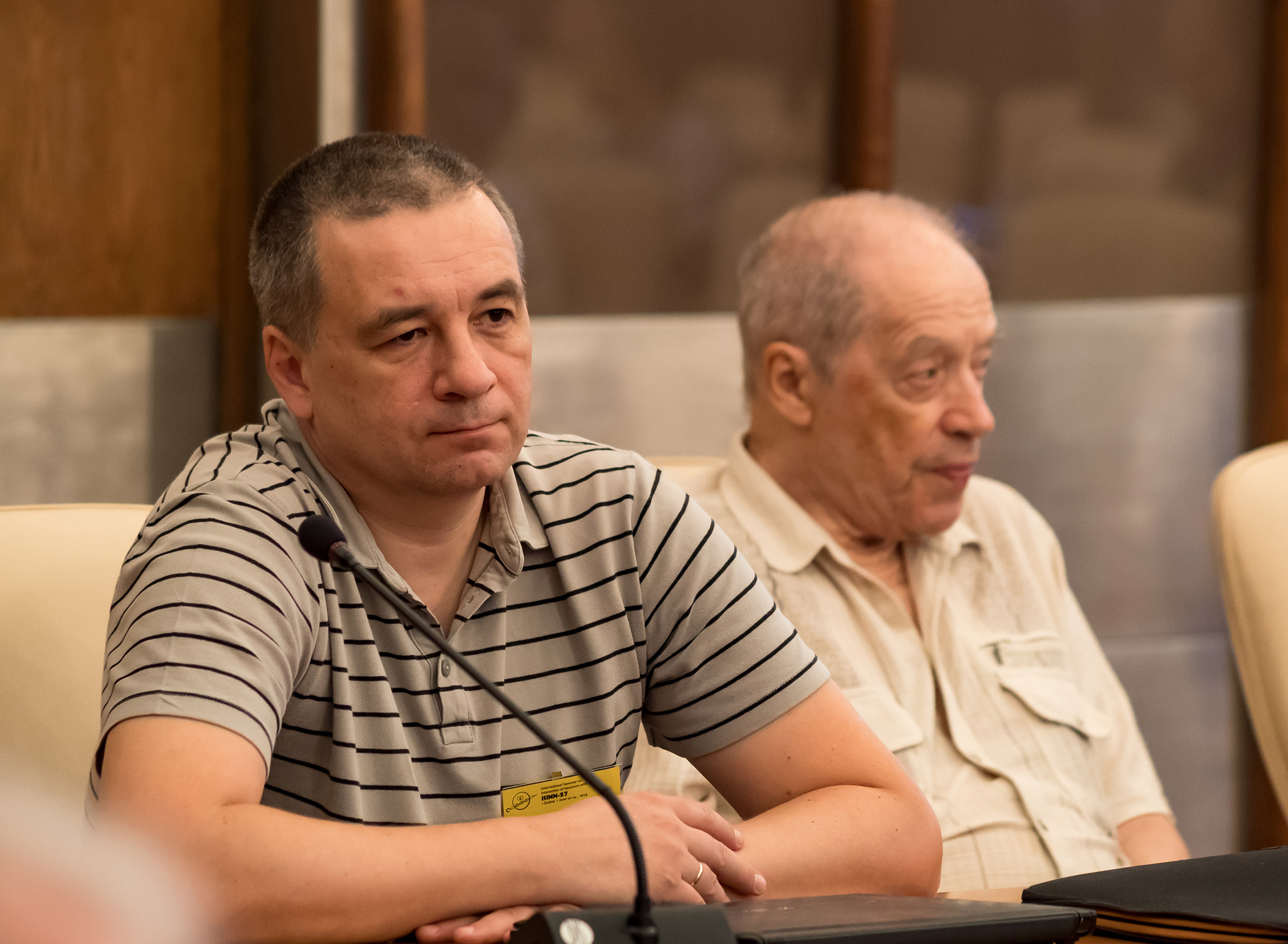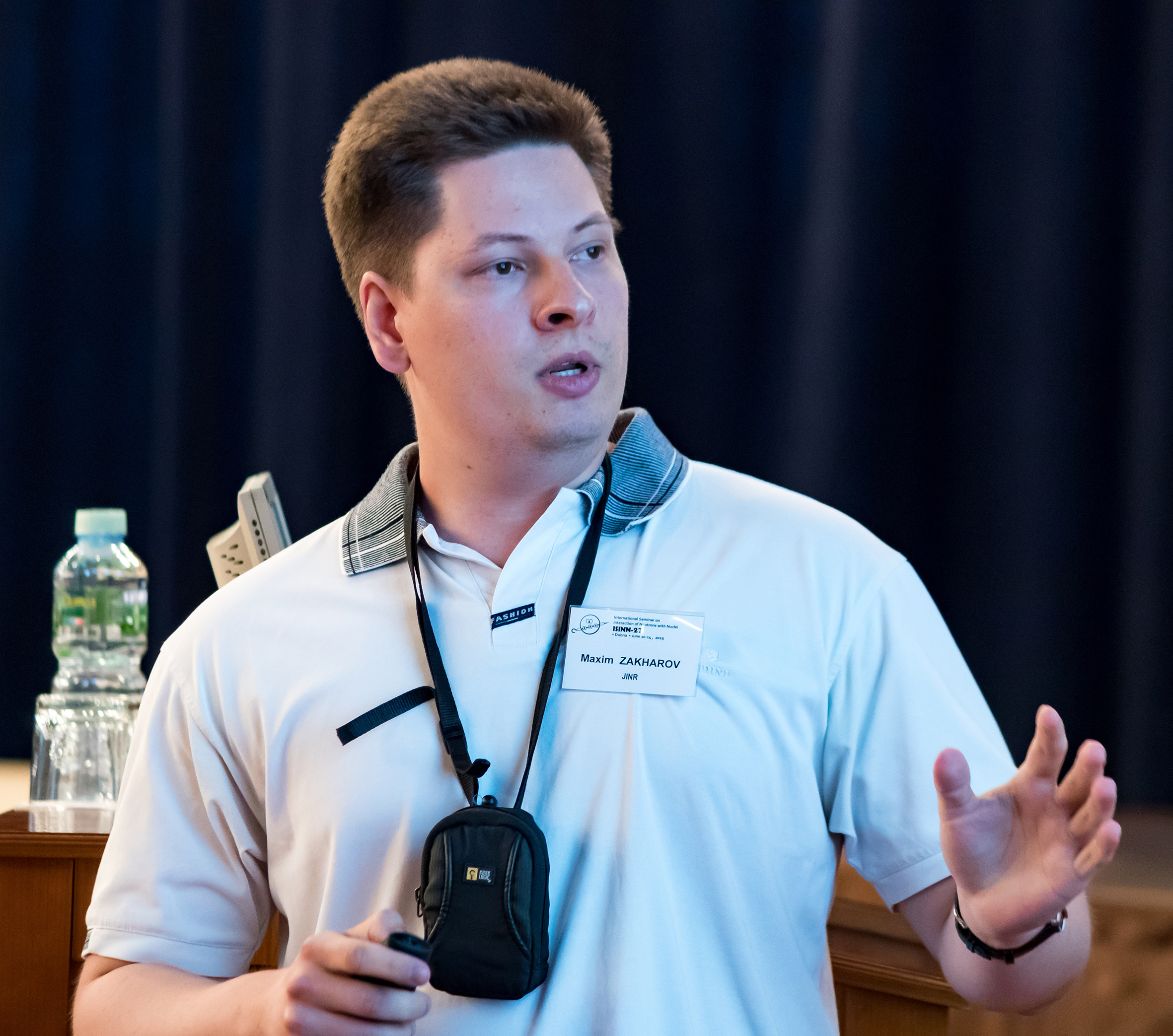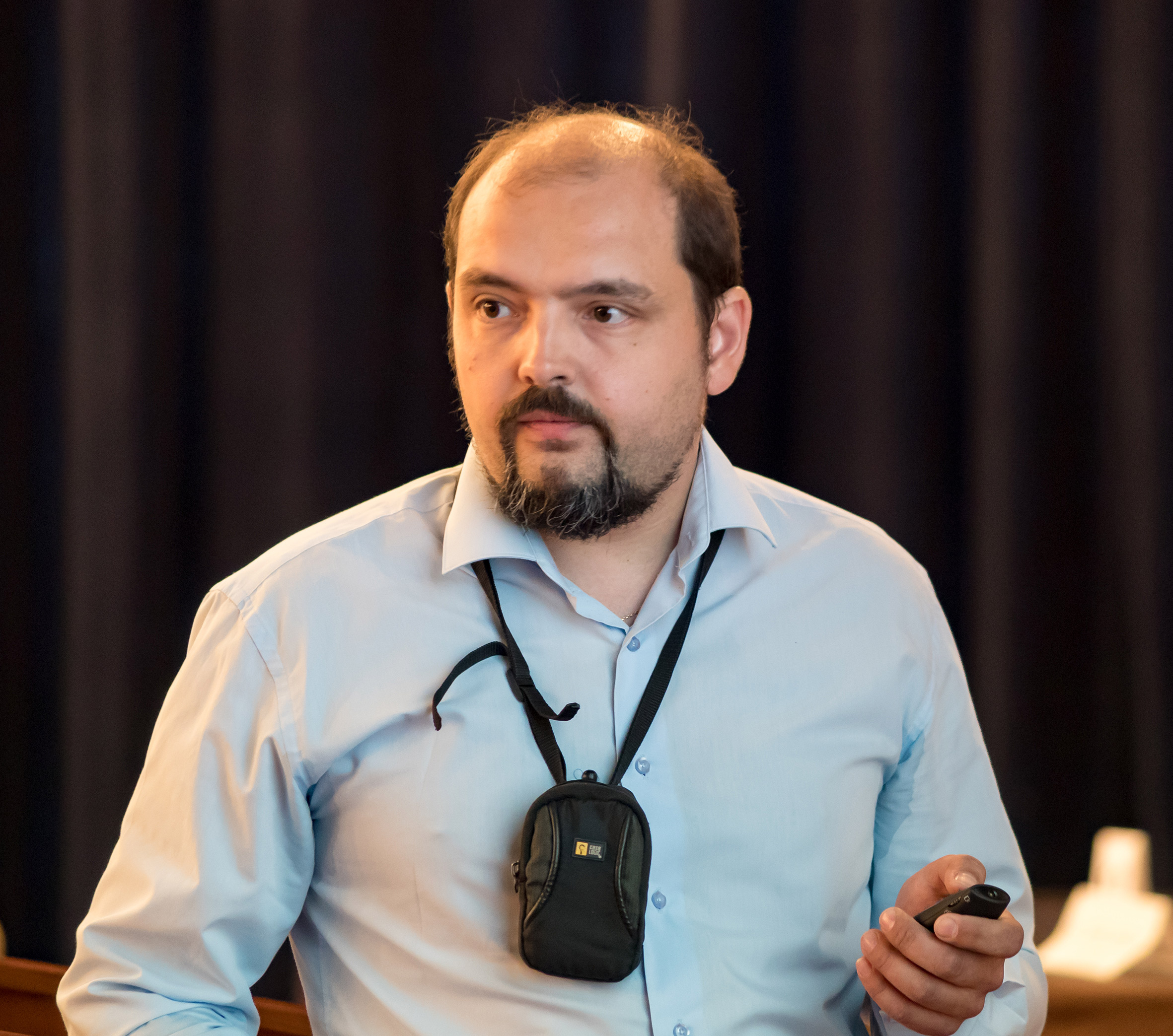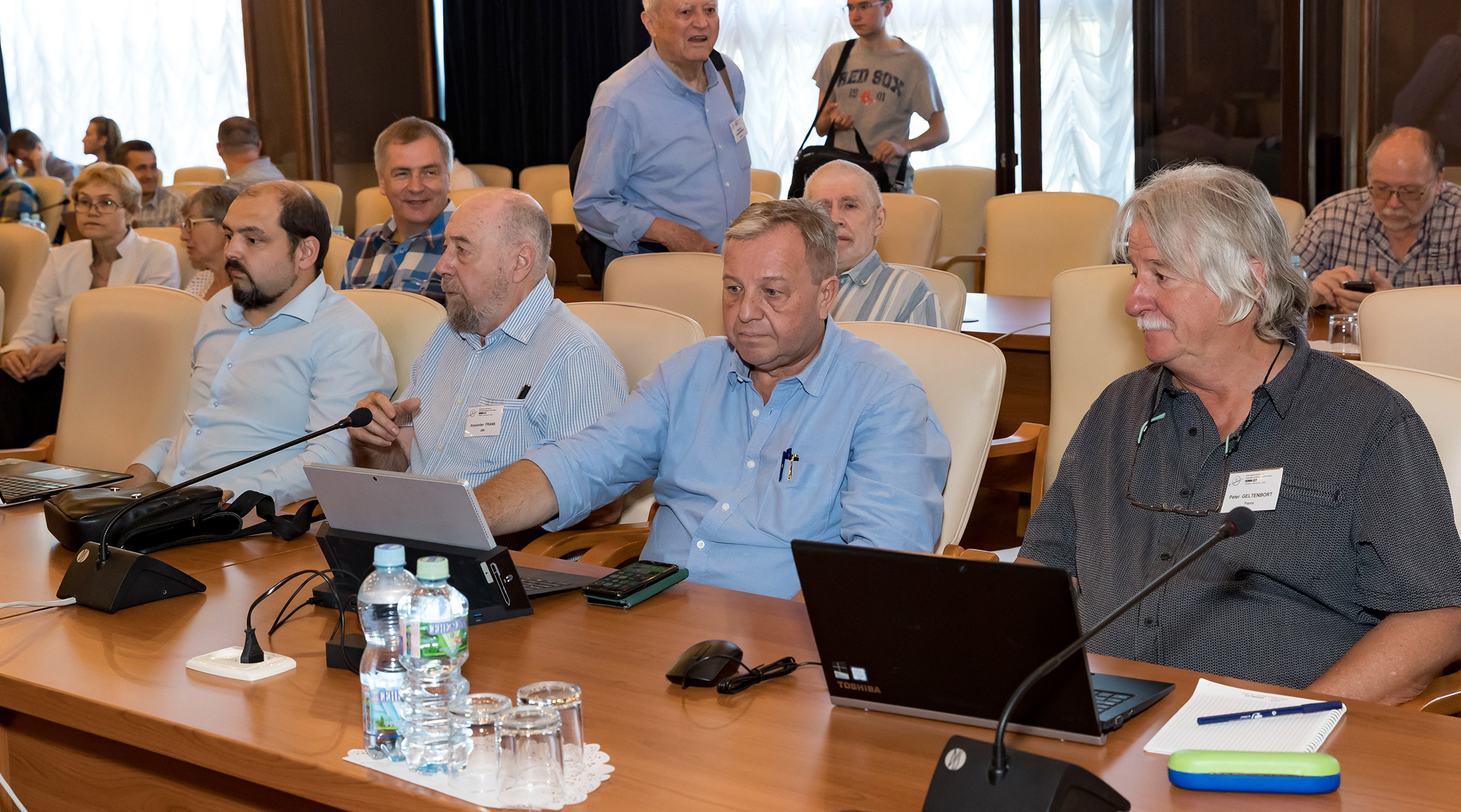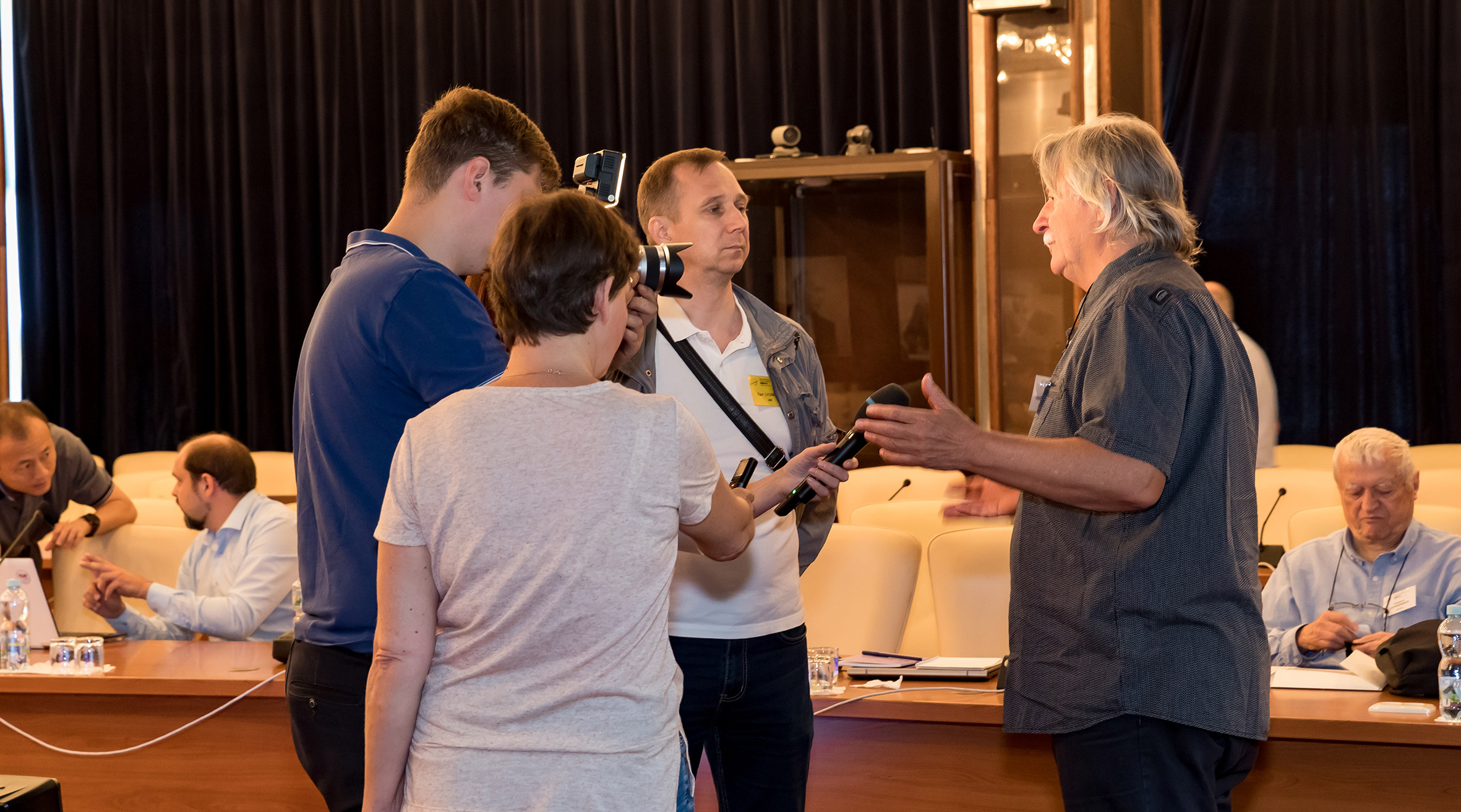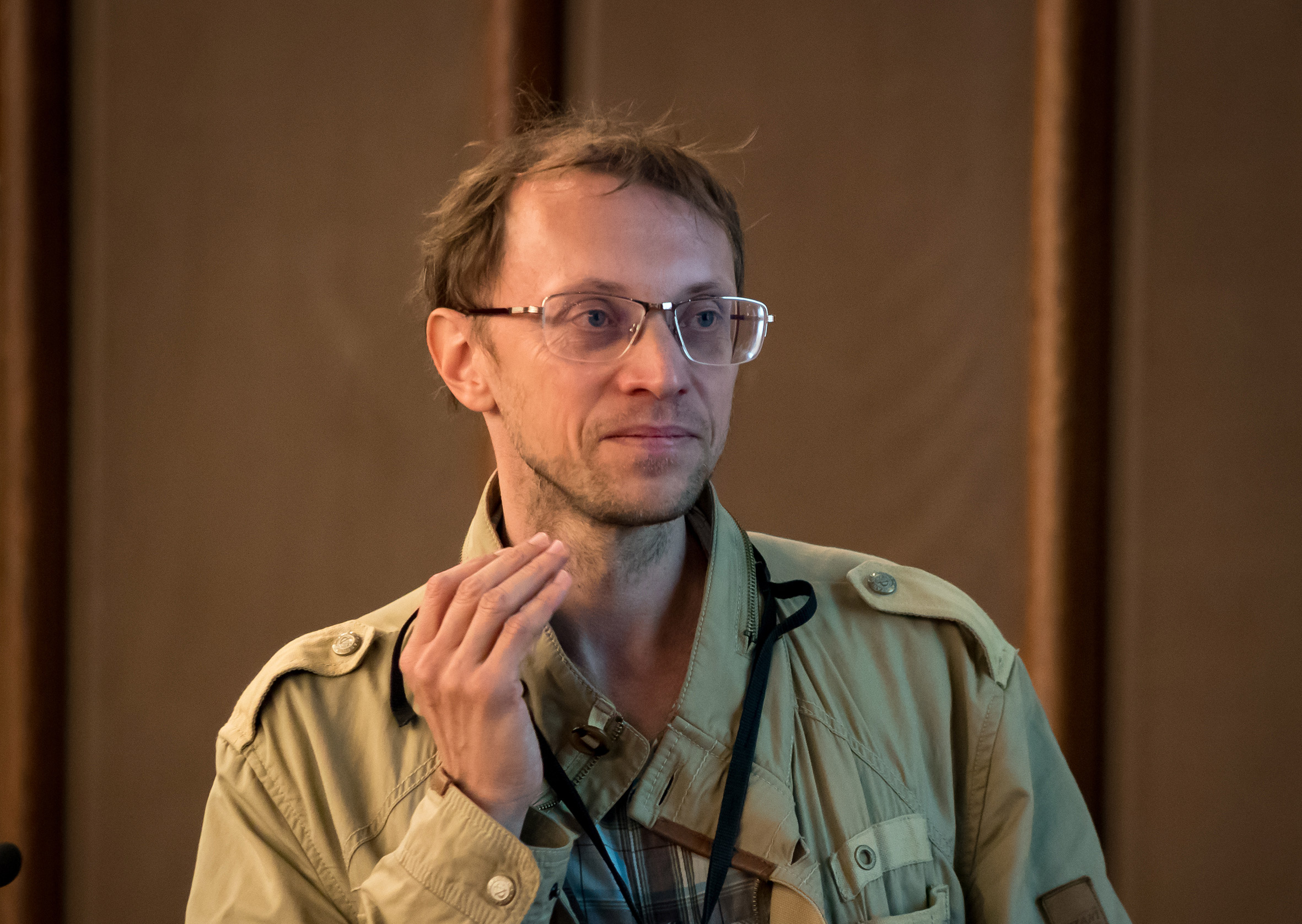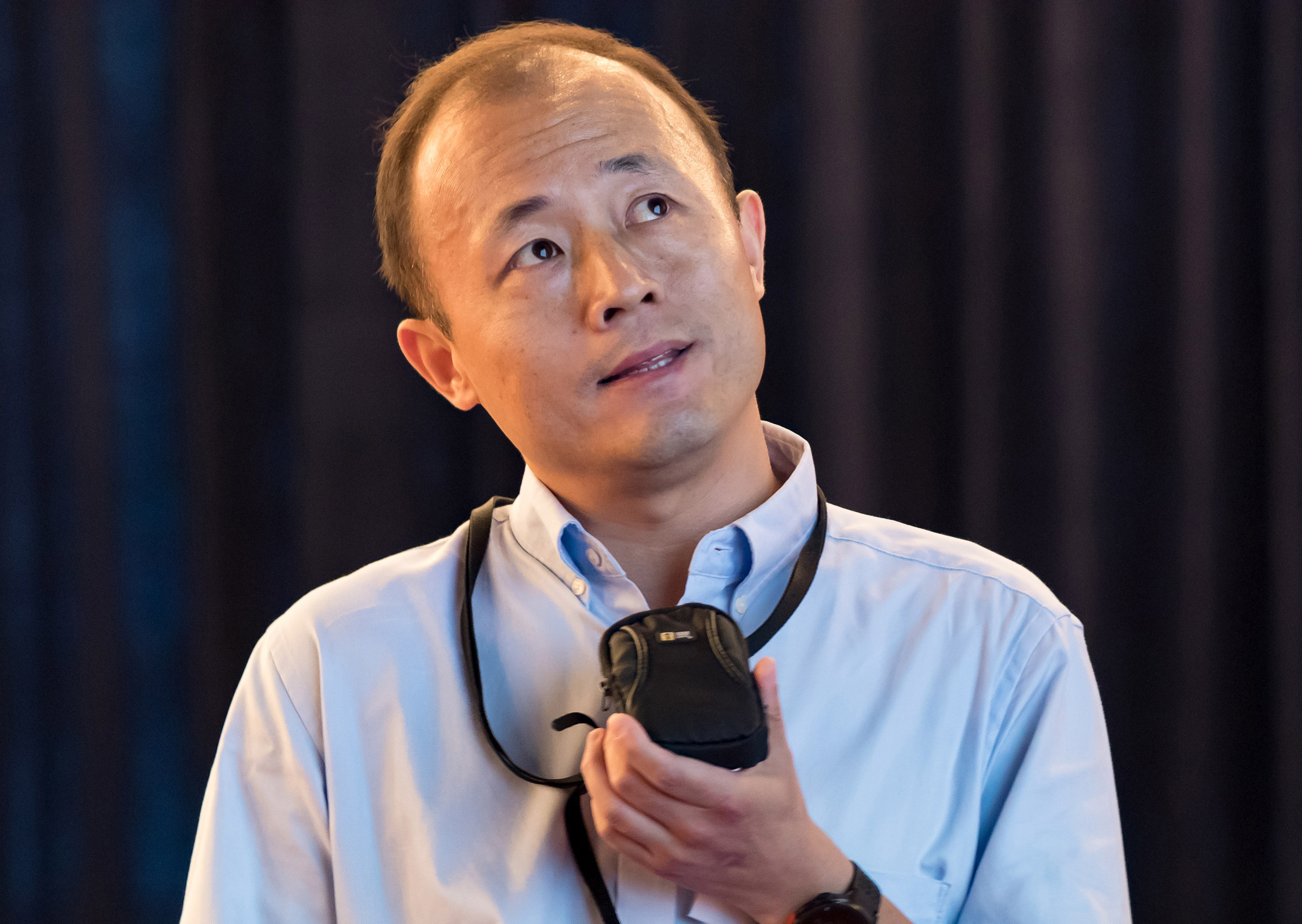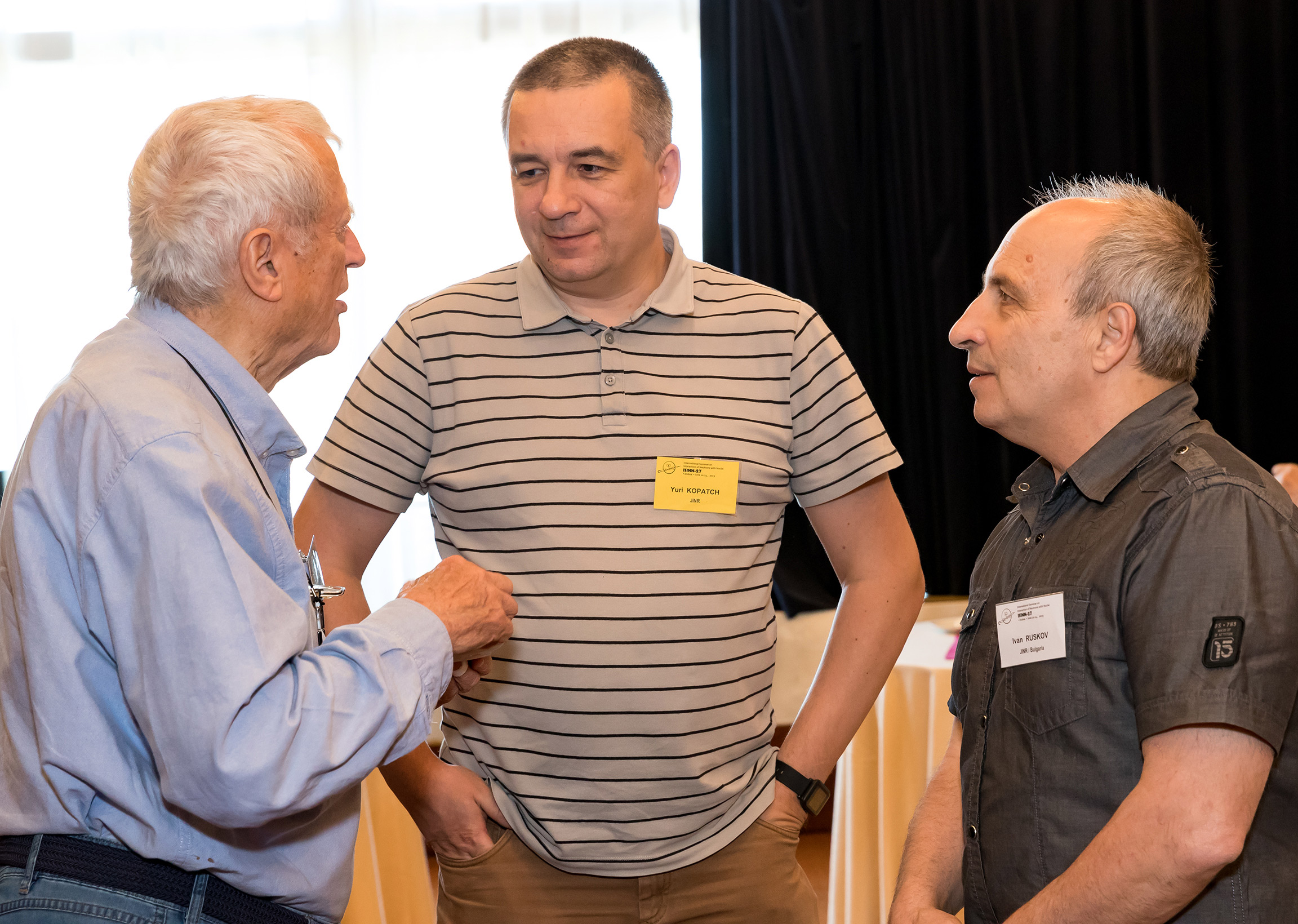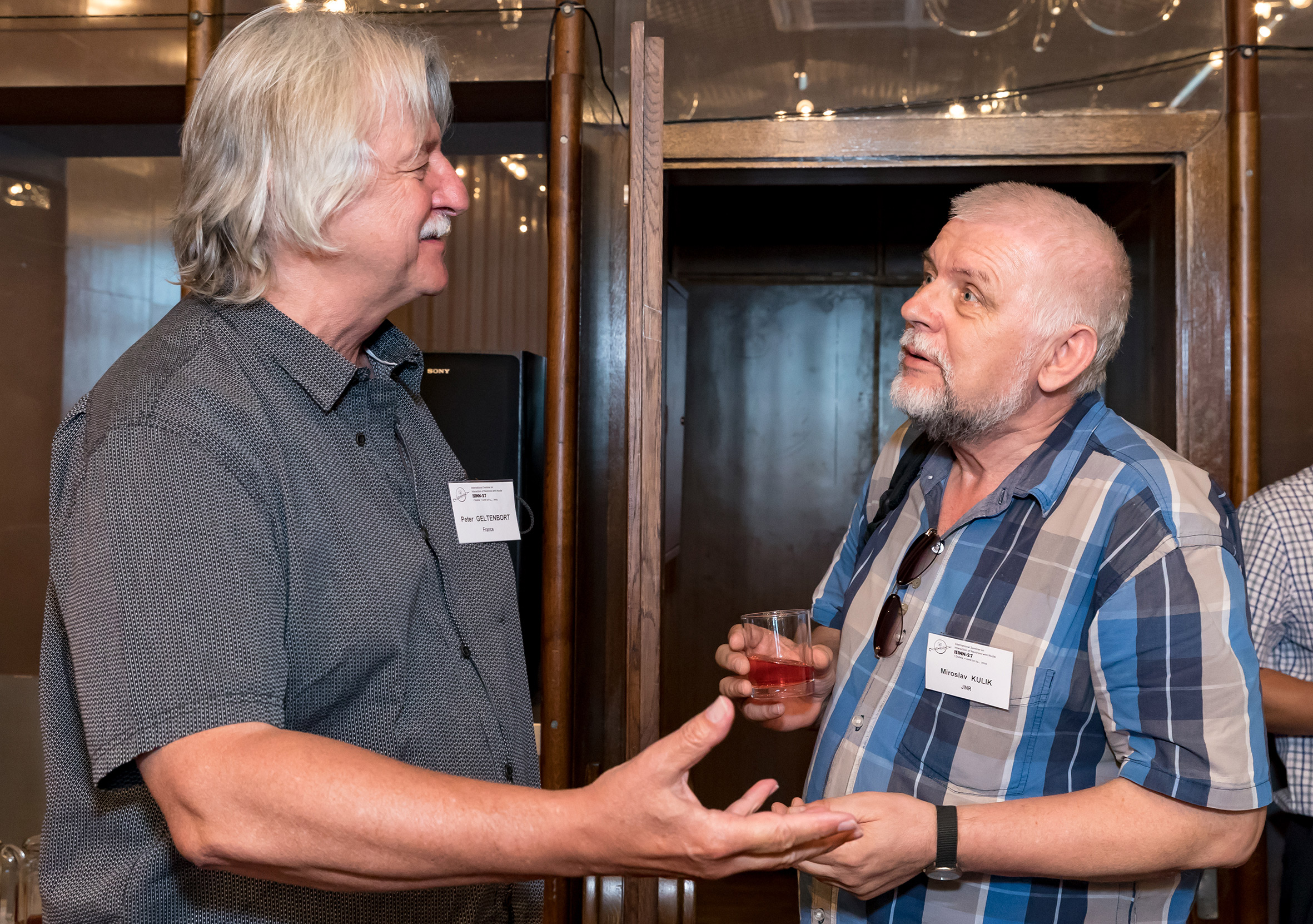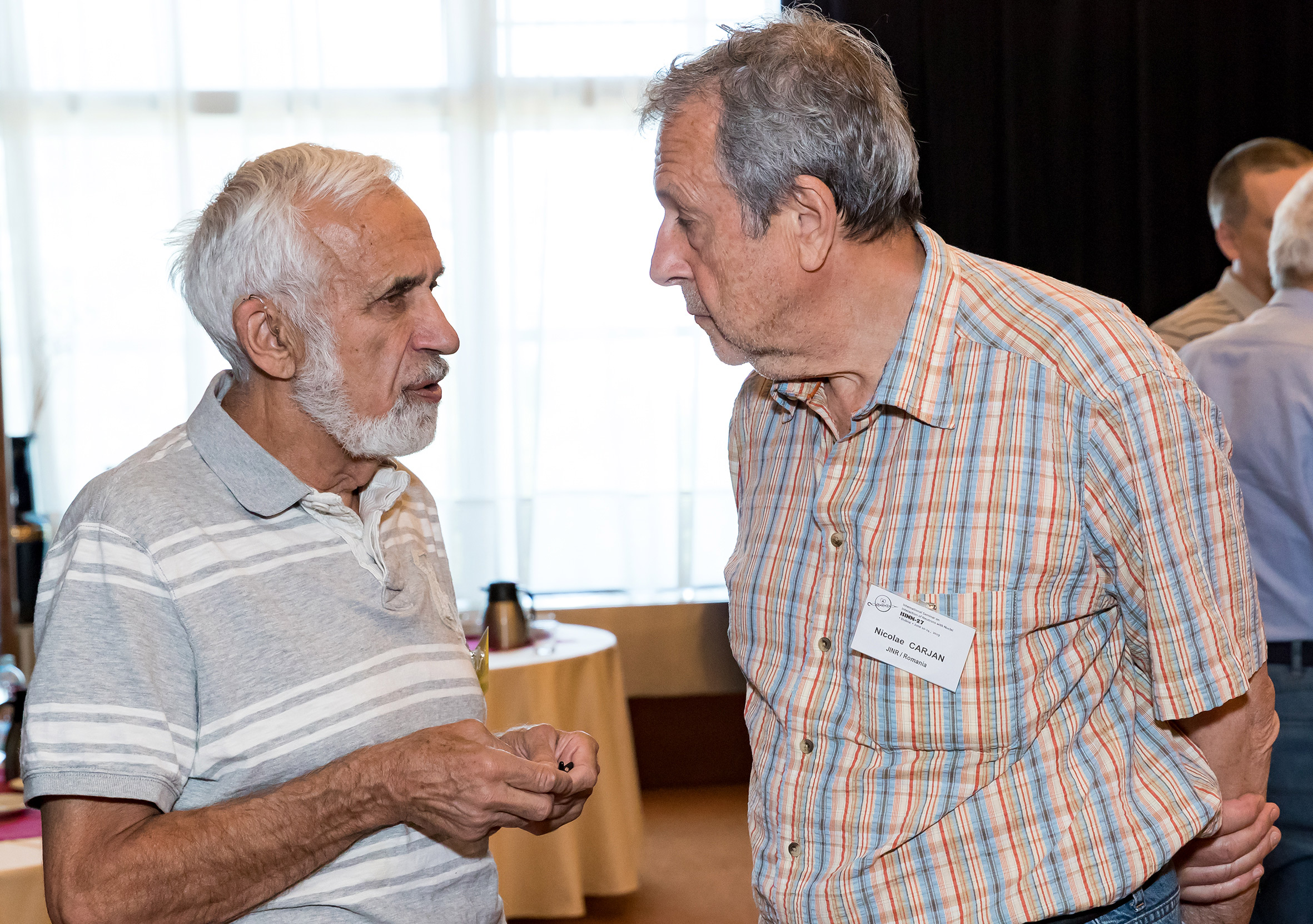ISINN: traditional, evolving, friendly
News, 28 June 2019
At the beginning of June, a traditional International Seminar on Interactions of Neutrons with Nuclei (ISINN-27) organized by the Frank Laboratory of Neutron Physics JINR jointly with colleagues from Chinese institutes and universities was held in Dubna. The programme traditionally covered a wide range of issues in the fields of neutron physics: from fundamental properties of neutrons and fundamental interactions in reactions with neutrons, nuclear fission, ultracold neutrons to analytical methods in material science and life sciences.
The Conference gathered more than 100 participants from scientific centres of Azerbaijan, Bulgaria, China, the Czech Republic, Egypt, France, Germany, Kazakhstan, Moldavia, Romania, Serbia, and Vietnam, Russian Institute of Physics and Power Engineering and the Medical Radiobiological Centre (Obninsk), NRC “Kurchatov Institute” – St. Petersburg Nuclear Physics Institute (Gatchina), Moscow NRC KI, Institute of Theoretical and Experimental Physics, Institute for Nuclear Research, staff members of the laboratories of neutron physics and nuclear reactions JINR.
Following a long-standing tradition, Peter Geltenbort (ILL, France) delivered his overview report on the first day of the Conference: “Our modernized reactor allows conducting various neutron experiments, including time-of-flight ones. That is why an opportunity to exchange opinions and ideas is extremely important. For experiments with ultracold neutrons that have been discovered in Dubna, your physicists come to ILL as far as there are no sources of ultracold neutrons in Dubna. We have carried out a lot of joint experiments and made many joint publications. My report was dedicated to the lifetime of neutrons, a topical issue nowadays. I considered two very different methods of determining the neutron lifetime. One method is a beam one, the second one is based on keeping ultracold neutrons in a “bottle”.
I would like to note that particularly in Dubna, at the previous ISINN meeting, V. L. Kuznetsov proposed a new method for this measurement. It radically differs from two existing methods and combines them to some extent. According to the beam method, the number of neutron decays products (protons and electrons) is measured, while the method of keeping ultracold neutrons measures the number of neutrons before the decay and after it. The method offered by Kuznetsov suggests measuring of neutrons instead of products of their decay and not those that are in a “bottle” but flying in a beam. I am very glad that scientists in Dubna will try to implement it. I believe that it should be done, and if it is a success, Dubna scientists will become the first in the world to achieve it.
Nowadays, data of teams conducting these measurements using various methods differ by four standard errors, and this is an enormous difference. I hope that they will find a common denominator. Now it is one of the key problems many experimentalists work on: which of the methods is correct and why there is a difference in the estimation of neutron lifetime. Moreover, I showed in my report some planned experiments, in particular, in Munich, that are supposed to answer these questions. However, I personally mostly believe in the experiment with a “bottle”.”
“Are there any other recommendations from you for the future? It is your last participation in ISINN, isn’t it?”
“Officially it is. On 31 August, I will go into retirement but… Never say “never”. Maybe I will return to meet friends from collaborations. As for recommendations, at previous seminars, I have insisted on presenting my overview report at the beginning of the event, before reports by young scientists who report on details. It is significant that such a report is made by an experienced person.”
Prof. Hussein El-Samman (on the right in the photo), Coordinator of the APE-JINR cooperation, have visited JINR for several times: “I have participated in the BioMAP conference but it is the first time a take part in ISINN. In the frames of JINR – Egypt cooperation, we participate in the collaboration with the FLNP Sector of Neutron Activation Analysis. Wael Badawy reported on our latest results at the Conference.”
“Research on air quality was carried out,” Wael Badawy (central person in the photo). “We gathered samples from the Monifia province 70 km far from Cairo for the control. We studied the air quality using the most widespread herb, and as far as moss and lichens are not spread there, we took tree leaves of two kinds. We took samples in Big Cairo as far as several towns are included in Cairo. This research is the fourth stage of our project; in the first three stages, we studied a part of the water area of the Nile river and the Red Sea. Now, we study the Mediterranean Sea.”
“Did some of the presentations by Prof. El-Samman made at the conference interest?”
“There is always something new, there is always something to discuss. I highly appreciated the level of reports presented by different scientists.”
“Is Egypt going to send to JINR not only students but young scientists as well?”
“We already think about it, discuss. It is more useful for them to stay here for a longer period of time, to get knowledge and experience. This year, the APE-JINR programme celebrates 10 years of existence. During this time, more than 300 students visited the Institute in the frames of training programmes, conferences, worked for a longer time in the frames of projects. Our plans suggest the Egyptian youth to take part in mega-science projects, such as NICA. Knowledge obtained in JINR by young scientists will be useful in Egypt for the development of nuclear technologies. It is important as far as last year Egypt signed an agreement with Rosatom on the construction of nuclear power stations.”
Responsible for pulse neutron beam and the programme of nuclear research at the CSNS facility Jingyu Tang (Institute of High Energy Physics, Beijing, China): “I attended the last-year ISINN; impressions were very favourable. It was the second time I took part in the Conference but the first time I visited Russia as far as last-year ISINN had been held in China. I think it is a great place for experience exchange and establishing new contacts. A high level of research is seen at the Conference.
China is actively developing. That is why there is good potential for cooperation. Development of our new neutron spallation-source CSNS is concluded. It has become one of the best neutron sources in the world. It is a branch of the Institute of High Energy Physics in Beijing. It is an international centre similar to JINR, and, maybe, the most international laboratory in China. We develop close cooperation with CERN, as well as with other centres engaged in high energy physics, namely DESY in Germany, KEK in Japan.”
D. V. Khliustin (INP, Moscow) has been participating in the Conference for 10 years: “Dubna ISINN is a very meaningful international conference. Each year, participants from all Russian organizations carrying out work in the fields of experimental nuclear physics gather at this Conference. We measure the cross-section of interactions of neutrons with nuclei. It is made, first of all, in the interests of physics of nuclear reactors, for providing primary data for accounting codes. Along with the importance of the theoretical description of the dependence of neutron cross-sections of various isotopes on energy, it is worth to mention the following: with the demanded high precision – the ideal precision is 0,2 % – the data can be obtained only from the experiment. Experimental histograms are transformed into files of 28-group cross-sections the numbers of which are used as coefficients in solving the equation system showing the neutron transfer in a nuclear reactor and its radiation protection.
A 28-group constant system used everywhere, which includes tables of interaction cross-sections of neutrons with nuclei for each isotope and matrixes of intergroup transfer, was created in 1978 and is now gradually replaced by a new 299-group. The previous system provides a detailed calculation for the reactor at thermal and intermediate neutrons while the 299-group system gives an opportunity to provide the demanded estimated error of the reactivity coefficient for reactors at fast neutrons: the operating BN-800 and BN-1200 being designed. According to the IAEA classification, these are nuclear reactors of the fourth generation.
In terms of the development of technologies of reactors at fast neutrons, Russia is among the world leaders. ISINN participants contribute to the future progress of this field. Our report presents experimental results of measurements of interaction cross-sections of neutrons of various energies with nuclei of several isotopes: gold, indium, and tantalum. It may seem fascinating but four major world databases – American ENDF, European JEFF, Russian ROSFOND, and Japanese JENDL – still store controversial resonances and variant readings. We measured and decided which of the controversial resonances really exist. Our Institute has contributed to improving the accuracy of the world’s nuclear data by measuring high-purity material samples.”
Olga Tarantina, JINR Weekly Newspaper
Photos by Elena Puzynina
(The article will be concluded in the next issue of the Newspaper)
